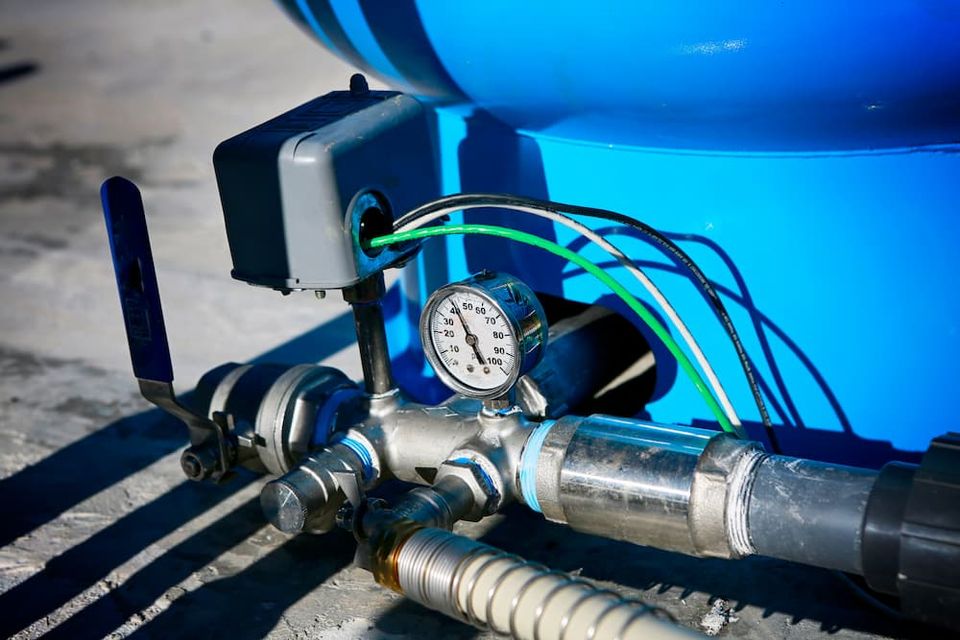The Role of a Well Pressure Tank
A well pressure tank helps maintain a steady and reliable water supply for the home. It stores water and uses compressed air to maintain consistent pressure, so your pump doesn’t need to run every time you turn on a faucet. Without it, your pump would cycle constantly, wear out quickly, and cause unreliable water flow. A properly functioning tank ensures you avoid costly well pressure tank problems, protects your pump from strain, and delivers water smoothly throughout your home.
Common Signs of a Bad Well Pressure Tank
Spotting issues early helps prevent pump damage, plumbing failures, and costly repairs. When you know the signs, you can act quickly before problems escalate. Discover common well pressure tank symptoms to watch for in your Berks County home.
Low Water Pressure From Well
One of the first indicators of trouble is low water pressure from well systems. If showers feel weak or faucets barely flow, your tank may not be maintaining pressure correctly. A failing bladder inside the tank, clogged fittings, or internal corrosion can all cause this issue.
Air in Faucets and Short Cycling
Another warning sign of a bad well pressure tank is when faucets sputter with bursts of air instead of a steady water flow. This usually means air has entered the system due to a tank malfunction. You may also notice the pump turning on and off rapidly, known as short cycling. Both are clear signs your system is under strain. Left unchecked, short cycling can damage the pump motor and result in costly repairs.
Waterlogged Pressure Tank Signs
A waterlogged pressure tank occurs when the tank fills with water and loses the air cushion needed to regulate pressure. Symptoms include the pump running continuously, pressure fluctuations, and noisy operation. Waterlogged pressure tank signs put extra stress on the pump and plumbing, often requiring prompt service to avoid total system failure.
What to Do If You Suspect Well Pressure Tank Problems
Ignoring well pressure tank symptoms can result in costly repairs and even water loss in your home. While it might be tempting to try DIY fixes, pressure tanks involve electrical and plumbing systems that require professional expertise. The safest step is to call a trusted plumber who can diagnose the issue, perform well tank troubleshooting, and recommend the best solution.
Contacting a Professional Plumber
If you suspect problems with your well pressure tank, call a licensed plumber. Quality Plumbing Solutions specializes in identifying problems, resolving issues, and restoring consistent water pressure. We provide reliable, local service to homeowners across Berks County.
Pressure Tank Replacement and Maintenance
Sometimes, repairs aren’t enough, and replacing the pressure tank is the most effective solution. A professional can advise when to replace a well pressure tank and install the unit correctly. Preventive maintenance helps extend the life of your system and reduce the risk of failure. Key steps include:
- Regular inspections to spot early well pressure tank symptoms
- Checking pressure settings to ensure consistent performance
- Scheduling service if you notice any bad well pressure tank warning signs
Protect Your Home With Expert Well Tank Service
Recognizing the signs of a bad well tank protects your home from costly damage and water disruptions. If you suspect issues with your tank, don’t wait. Act quickly and
contact Quality Plumbing Solutions for expert well tank troubleshooting, professional repairs, or pressure tank replacement. Our team keeps your water system running reliably year-round.
Image credit:
// Shutterstock // GSPhotography

